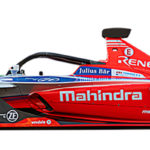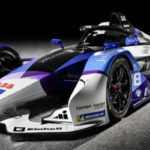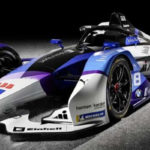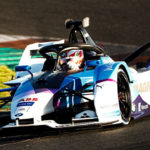British Touring Car Championship (BTCC) in 2022 will become the first major touring car event to feature high-performance mild-hybrid vehicles.
The BTCC is for production-based touring cars and consists of a series of races held across England and Scotland. Race teams compete in highly modified versions of cars sold to the general public. Next year, teams can use an electric motor to boost internal combustion engine (ICE) performance and vehicle acceleration.
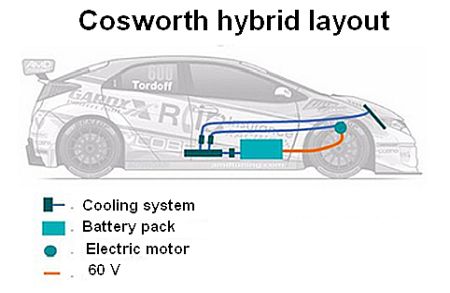
Here is the general layout of the BTCC mild hybrid as described by Cosworth.
Cosworth Electronics and Delta Motorsport devised the new electronics. Delta Motorsport designed a new battery pack and associated electronics for what’s dubbed the tactical boost.
The electronics package includes a 48-V lithium-ion-based battery pack and an intelligent power management accompanied by high-power-density dc/dc converters and a regulation system. The battery pack also accepts regenerated power. The dc/dc converters power the car’s electrical system. Use of the new power system eliminates the need for an alternator.
The battery feeds four dc/dc converters in parallel which together supply regulated 13.8-V power at up to 92 A (about 1.2 kW). The four converters share the load although three can handle it, i.e., providing N+1, or aviation-level redundancy.
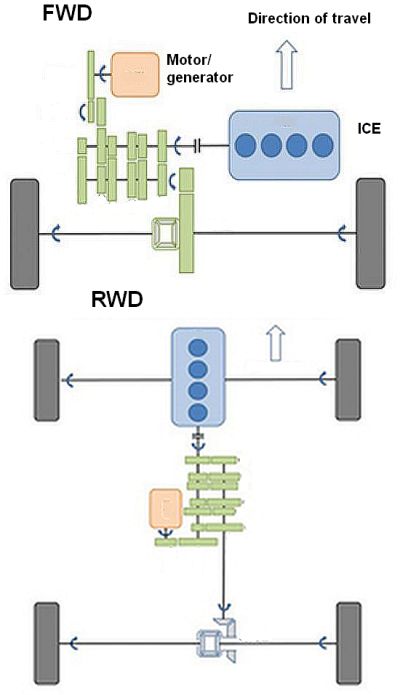
Cosworth describes both front-wheel and rear-wheel drive configurations for BTCC mild hybrids.
The electric motor is a three-phase brushless type that connects to the battery through a bidirectional inverter that also feeds back regenerated power. Cosworth says drivers will use the additional hybrid power for either passing or defending, and the additional electric motor will introduce new competitive strategies and opportunities during each BTCC race.
Cosworth also says it has run performance simulations that show the most significant gains will be at the low engine RPM ranges; the hybrid power burst will bring the engine up into the turbo ‘window’ more quickly. This will provide drivers deploying the system the chance to pull alongside or gain ground on the opposition. The driver will have a steering-wheel-mounted button to engage the hybrid. The hybrid deactivates on a second button press, the use of brakes, on reaching the time or energy limit, a reduced throttle pressure or sudden acceleration/deceleration. Cosworth puts the total weight of the hybrid system at about 165 lb.
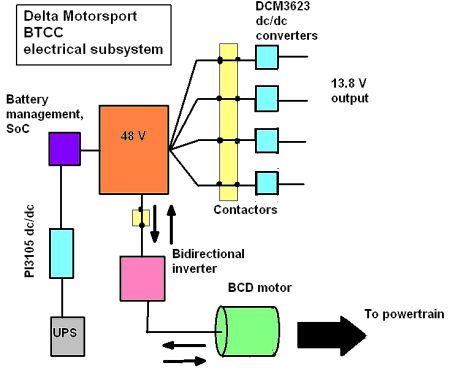
The electrical architecture of BTCC racers as described by Cosworth and Delta Motorsport.
The battery pack includes a battery management system that controls all the cell voltages and optimizes charge and discharge while communicating with the motor-inverter controller. It continuously calculates and updates the controller on how much current the battery can supply or accept, based on its state of charge (SoC). Power demand must be reduced at a low SoC, while regeneration must be limited at a higher SoC.
The system also monitors the temperatures of all available cells in real time and feeds the results into the available power calculations. Additionally, it can open contactors to isolate the battery pack safely if a problem arises.
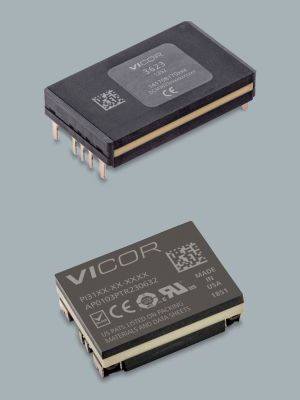
Top, a Vicor DCM3623. Below, a Vicor PI3105.
The power system uses four Vicor DCM3623 isolated, regulated dc/dc converter ChiP power modules. Their low profile and small footprint enables their mounting in direct thermal contact with the micro-bore cooling plates that extend between the battery cells.
Delta Motorsport also used a Vicor PI3105, a small 60-W isolated converter for an uninterruptable power supply (UPS), which powers the battery pack electronics to maintain the safety systems when isolated from the vehicle power supply. The UPS also allows the electronics to be powered independently of the vehicle, enabling remote connection for systems checks.

